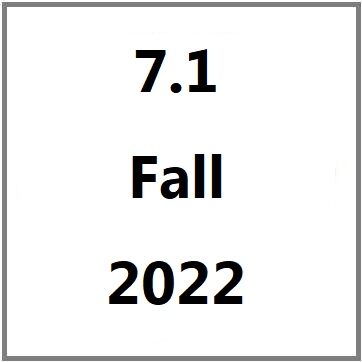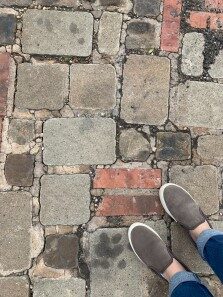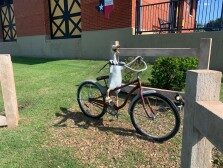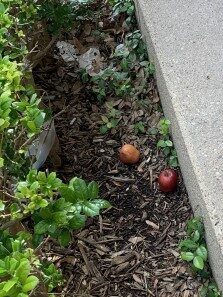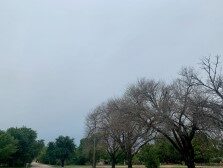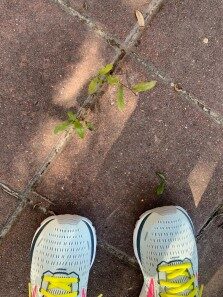Dialogic Imagining
Laura Bolin Carroll
Keywords: teaching, Centers for Teaching and Learning, faculty development
Categories: Creatively Caring for Self, Others, and Place; Revisionings of Teaching, Facilitation, and Professional Leadership; Reflecting on Academic (Over)work and/or Precarity; Writing the Process of Writing
|
The cobbler’s children have no shoes.
|
During the Spring of 2020, my job as the director of a teaching and learning center required me to support faculty at my residential undergraduate institution as we made a massive pivot to online education. Then, in the Summer of 2020, when the university made the decision to return to in-person instruction that Fall, my center had to help faculty prepare for HyFlex teaching: some students co-located, but masked and distanced, some students participating synchronously on Zoom, and some working through the material asynchronously. Understandably, faculty expressed a range of emotions. They were overwhelmed, anxious, angry, scared, hopeful, cautiously optimistic. The Center for Teaching and Learning staff saw our role as carers. We wanted to encourage, support, and equip faculty to teach courses that were as good as the circumstances would allow. But our own courses were languishing and neglected. We were like the cobbler whose children had no shoes. Sometimes our families were the neglected ones. Often we ourselves were.
|
|
A pair of grey shoes on a walkway with stones, bricks, and asphalt. There are grease spots on the stones.
|
So we cobbled. Pieced together syllabi. I added strawberries on the side of the girls’ frozen pizzas to make myself feel like it was a little bit healthy. Assembled a group of skilled and gracious faculty to consult with those less sure of their skills. Collected assignments and activities that might work in the new classroom spaces we would inhabit. These were not the lovely cobblestones of an Oxford square — the ones that once made my toddler squeal with joy as her stroller bounced over them — but the greasy bricks of makeshift driveway. Function over form.
|
|
“I was increasingly aware that the feminist beliefs on which I had built my entire career were shifting under my feet.” — Anne-Marie Slaughter, “Why Women Still Can’t Have it All"
|
I had heard about work-life balance, an aspirational narrative of the engaged professor, helpful committee member, caring administrator, who is also the attentive mama, daughter, friend, nurse, partner. In all the years I have worked in the academy, the foundation has been shaky. This moment, however, stripped and scattered any semblance of stability.
|
|
A statue of a duck on a bicycle in front of building.
|
We are not balancing, we are teetering. Not waving, but drowning.
|
|
“Juxtaposing conflicting ideologies and practices of dialogic pedagogy provides for authentic questions and tensions to emerge as scholars across various settings for learning, and cultural/historical practices provide rich perspectives on the problematic of dialogue in education.” — Focus and Scope, Journal of Dialogic Pedagogy
|
The swaying of the bike reminds me of a dialogic journal: a cobbled together collection of others’ quotes and my reflections that attempt to capture a moment, and, hopefully, speak to other moments of caring. Juxtaposition. Authentic Questions. Tensions. Teetering. Can a dialogic journal address some of the juxtaposition? (Why can’t I think of a better/different word here? Am I too tired? Is the brain fog of covid? Is it just that juxtaposition is the right word?)
|
|
“Bakhtin uses the category ‘novel’ in a highly idiosyncratic way, claiming for it vastly larger territory than has been traditionally accepted. For him, the novel is not so much a genre as it is a force, ‘novelness.’” — Catalog entry for The Dialogic Imagination, UT Press
|
This form might be new. Novel. Unorthodox. Idiosyncratic. Imaginative. Delightful.
|
|
Two rotting apples sit in a garden bed against the side of a building.
|
But this writing feels transgressive. Like I’m trespassing on the form of the poets. Function over form?
|
|
“It wasn’t burnout — we still had energy. It wasn’t depression — we didn’t feel hopeless. We just felt somewhat joyless and aimless. It turns out there’s a name for that: languishing. “Languishing is a sense of stagnation and emptiness. It feels as if you’re muddling through your days, looking at your life through a foggy windshield. And it might be the dominant emotion of 2021.” — Adam Grant, “There’s a Name for the Blah You’re Feeling: It’s Called Languishing”
|
Everyone posts the link to Grant’s NYT piece. We’re all languishing. Stuck. Weary. The well from which I draw my ability to care has long been dry. How do I cobble together the energy for my work? Who cares? Who cares? Even more so, how do I “catapult myself into flow,” when “fragmented attention is an enemy of engagement and excellence?” All of my attention is fragmented. Hoping I don’t have to unmute before my daughters stop screaming at each other in the kitchen. The university president asking if I’ll lead a new initiative. The faculty I care deeply about (and for) feeling terribly anxious. So many Zoom meetings.
|
|
|
But also, I’m really good at my job.
|
|
“It seems to me that the reason that so many of us feel like we’re languishing is that we are trying to flourish in terrible conditions. It is spring outside — or the ‘unlocking’ season — but it is still ‘Winter in America,’ and, as any gardener knows, if you try to wake a plant out of dormancy too soon, it will wither, and maybe die.” — Austin Kleon, “ I’m not languishing, I’m dormant ”
|
Is dormancy a better alternative to languishing? Is it an option to be dormant? Of course we’re not flourishing, but what if we are still expected to grow.
I know that’s how the faculty feel. We send them notes of encouragement, host a candle-making session, record screencast after screencast to help them use the LMS, hand popsicles into their car windows.
|
|
A picture of trees. The ones on the left are in leaf and the ones on the right have no leaves on them.
|
How can I tell the difference between dormant and dead?
Do I look like the trees on the right or the ones on the left?
|
|
“Normally the types of programs and services [centers for teaching and learning] offer fall within the categories below...workshops, individual consultations, classroom observations, orientations, faculty fellows, teaching circles, learning communities…” — Virginia S. Lee, “Program Types and Prototypes,” A Guide to Faculty Development |
Teaching during a global pandemic isn’t on the list. Nor is pivot. HyFlex. New Normal. There are no prototypes. The faculty developer listserv is full of queries, suggestions, links. We do our best to help each other. Not only is the foundation of the feminist myth shaken, much of higher ed is.
|
|
“Hope is not a lottery ticket you can sit on the sofa and clutch, feeling lucky. It is an axe you break down doors with in an emergency.” — Rebecca Solnit, Hope in the Dark
|
This is definitely an emergency.
|
|
“It seems to me that the reason that so many of us feel like we’re languishing is that we are trying to flourish in terrible conditions. It is spring outside — or the ‘unlocking’ season — but it is still ‘Winter in America,’ and, as any gardener knows, if you try to wake a plant out of dormancy too soon, it will wither, and maybe die.” — Austin Kleon, “I’m not languishing, I’m dormant”
|
Is dormancy a better alternative to languishing? Is it an option to be dormant? Of course we’re not flourishing, but what if we are still expected to grow. I know that’s how the faculty feel. We send them notes of encouragement, host a candle-making session, record screencast after screencast to help them use the LMS, hand popsicles into their car windows.
|
|
“Teaching is a radical act of hope ... our most quotidian practices — even and especially in environments of adversity — are a constant assertion that through our work with and among our students we are creating a better future.” — Kevin Gannon, Radical Hope: A Teaching Manifesto
|
I ordered this book before March 2020. When I attended the online launch, it was the first time I was Zoombombed with racial epithets and porn. But I want to believe it. Especially the part about quotidian practice of teaching. I call to mind Kathleen Norris’ ideas about the liturgy of laundry and women’s work. The hope that these tasks ground us in the world, rather than grind us down. Then I think of bell hooks’ teaching manifesto. Teaching — and equipping/caring for those who teach — in the midst of chaos is the true transgressive task.
|
|
“The classroom remains the most radical space of possibility in the academy.“ — bell hooks, Teaching to Transgress: Education as the Practice of Freedom
|
Hope. A tiny green bud. It perches in the soul.
A pair of running shoes on a sidewalk. A small piece of greenery pokes through the cracks in the sidewalk.
|
Bio
Dr. Laura Bolin Carroll is the executive director of the Adams Center for Teaching and Learning and a professor of Language and Literature at Abilene Christian University. She is also a mother, a spouse, and a lover of national and state parks.
